As a rule of thumb, it costs about $20-$80 to change a motorcycle tire. If you take off the wheels and bring them into a shop you can expect to pay $20-$40 per wheel. But if you bring the whole bike into the shop be prepared to pay $40-$80 per wheel, in addition to the cost of the tires of course. Some dealerships may quote you much more, but don’t be ripped off!
If you want to learn more about motorcycle tire change costs, you are in the right place.
We at PowerSportsGuide have gathered the average prices as well as the cheapest solutions under one roof!
How much does it cost to change motorcycle tires?It’s safe to say that the cheapest way to change motorcycle tires would be if you do the work yourself. However, as you will see, this is not recommended for security reasons.
A reputable shop can not only professionally mount your tires, but they also balance the wheels with a special rebalancing machine.
Balancing the wheels is very important since only a slight weight difference can lead to vibration. That’s why it’s recommended that you get the tire change done by a professional who can rebalance the wheels along with changing the tires.
Moreover, many shops offer a discount or don’t even charge for the change if you buy the tires from them.
You can also keep your costs low if you pull the wheels off yourself and bring them into the shop. This way it will cost about $40-$80 to change a pair of motorcycle tires.
On the other hand, many riders simply prefer riding to a dealership or a local shop to get the tire change done. This is arguably the most convenient solution, but also the most expensive!
If you are also considering visiting a shop, it’s recommended that you shop around to find the best rates available. The labor costs vary widely depending on the size and location of shop.
As you may assume, you can expect the highest rates at authorized dealerships. It’s not uncommon for dealers to quote $150-$400 to change motorcycle tires
!
It’s not uncommon for dealers to quote $150-$400 to change motorcycle tires
!
In contrast, small local shops are significantly cheaper, as they usually charge $80-$160 for the entire job.
It’s also good to know that replacing the tire on the front wheel is always significantly cheaper than the rear, a 50% difference in price between the two wheels is not uncommon.
However, best practice is to replace both tires at the same time!
Can I change a motorcycle tire myself? – we get this question a lot and the answer is that it depends. Although it is possible to change the tires on your motorcycle at home, in most cases this is not recommended. Why?
When it comes to motorcycles, the primary consideration should always be safety.
And improperly mounted tires can be dangerous in many ways, so it’s not worth the risk of gambling with them! Contrary to popular belief, changing tires requires skill as well as some specialized tools.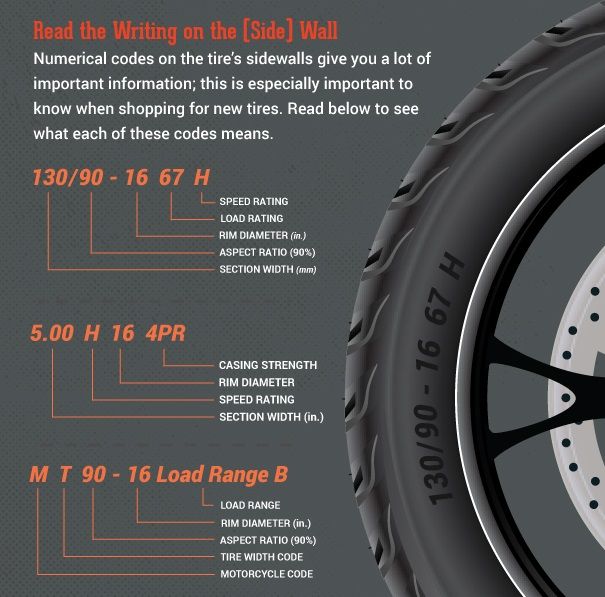
Even if you can properly mount the tires, you always risk scratching the rims or damaging the new tires.
Additionally, a professional shop not only changes the tires, but their service typically includes the balancing, lining, setting the chains tight, and a test ride as well.
Although you can do all of these tasks yourself, it still takes time and effort. It may take hours just pulling the wheels off, mounting and inflating the tires, and finally balancing and replacing the wheels.
This is why best practice is to get it done by a tire shop. Let’s see where you can find one!
It’s safe to say that the majority of tire shops can change motorcycle tires, even dedicated auto tire shops. In most cases, it makes sense to visit a local shop rather than ride many miles to a dealership. What’s more, local shops are typically much cheaper as well! But to make sure they can handle the change it’s worth a phone call first.
In most cases, it makes sense to visit a local shop rather than ride many miles to a dealership. What’s more, local shops are typically much cheaper as well! But to make sure they can handle the change it’s worth a phone call first.
Whether you can change a motorcycle tire on a car tire machine is strictly dependent on its design. While many older machines could change motorcycle tires without any issues, modern machines clamp on the rim and feature a rotating table. This means if you want to change a motorcycle tire on these machines you will likely need an adapter, which holds the wheel higher off the rotating table.
Unfortunately, many of the newest car tire machines can’t be used at all to change motorcycle tires. This is because some manufacturers don’t provide adapters for motorcycle wheels.
This is because some manufacturers don’t provide adapters for motorcycle wheels.
If you have access to a tire machine and are considering replacing the tires yourself, make sure to have somebody close by who is familiar with using the machine.
Operating a tire machine is not rocket science, but like any other power tool it can be dangerous in many ways. Doing it wrong can damage the tire or even the surface of the rim!
If you want to change the tires on your motorcycle you have four options:
DIY tire replacement: Even if this is the cheapest way to change the tires unless you’re an experienced mechanic it’s not recommended that you do it yourself. Keep in mind that doing it wrong can damage the tires or even the rims. Keeping safety in mind, best practice is that you leave it for professionals.
Remove the wheels: Many riders prefer pulling the wheels and bring into a local shop or a dealership, so you may want to consider this solution.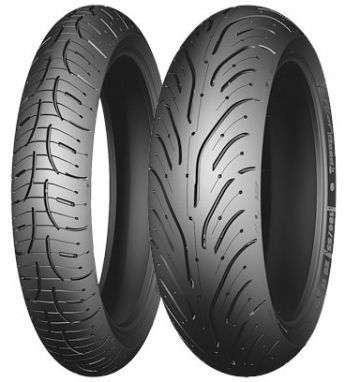 This way, you can get much better rates while making sure that the tires are professionally replaced and balanced. If you bring the wheels in yourself, changing a pair of motorcycle tires typically costs $40-$80 in most tire shops.
This way, you can get much better rates while making sure that the tires are professionally replaced and balanced. If you bring the wheels in yourself, changing a pair of motorcycle tires typically costs $40-$80 in most tire shops.
Ride to a tire shop/dealership: The most convenient solution is arguably riding into a tire shop or a dealership to get the job done. The rates of smaller tire shops range from $40 up to $80 while dealerships can even quote $150-$400!
The rates vary widely depending on the size and the location of the shop, so it makes sense to shop around before making a decision!
Whether you ran over a nail or have just burned off your tread peeling out, getting your motorcycle tires changed isn’t the funnest activity.
Partly because you hate the downtime that you could be riding, but also because you never know where to take your motorcycle in and whether you’re getting a good deal.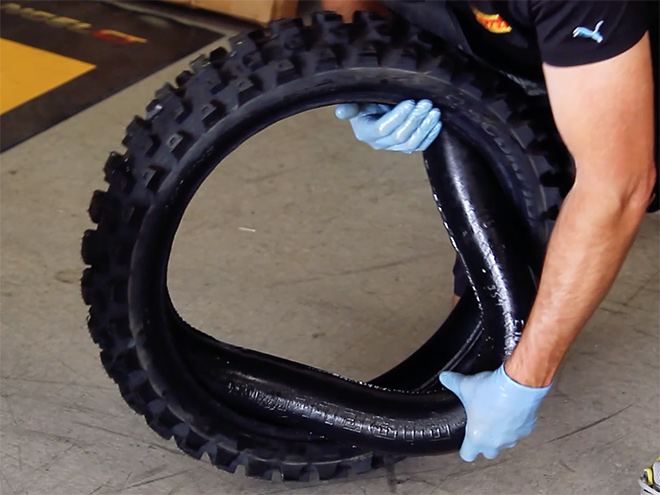
Well, you can stop worrying.
I looked at shops around the country to find what you can expect as a reasonable cost for your motorcycle tire change and what factors can raise or lower the price.
On average, a tire change for your motorcycle will cost around $50 per tire. This can vary a lot, though, with your cheapest tire changes costing only about 20 bucks and the most expensive running upwards of $200.
Why is it such a big range? There are a number of factors that come into play.
With a car, the tires can be changed in a few minutes because it’s pretty easy to pop off the wheels.
Motorcycles are much more difficult, especially the rear wheel. The chain and brakes have to be aligned afterward as well as balanced.
If the shop does this work for you, it’ll cost more. If you take the wheels off and put them back on yourself, shops usually charge a little less.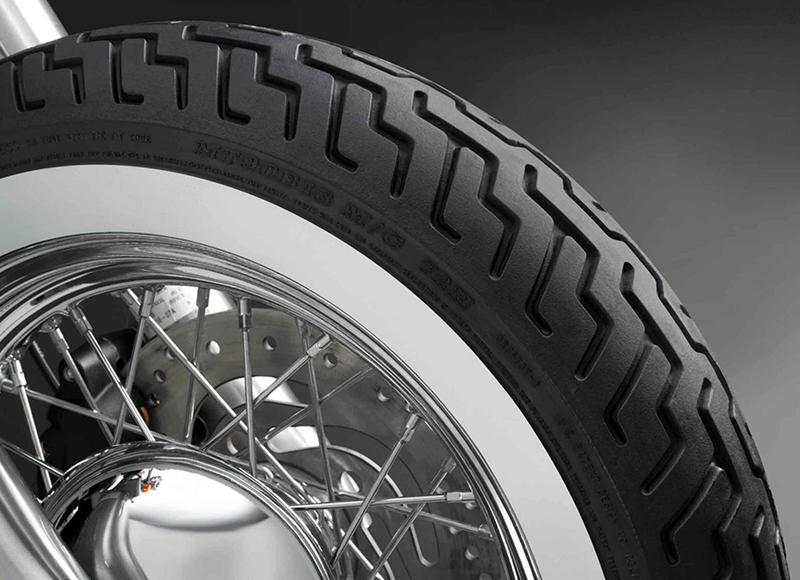
The rear tire is a lot harder to change. If you bring your whole bike in, some shops may charge a different price for the front tire versus the rear.
Like most things, motorcycle tire changes vary in cost depending on what part of the country—or world—you live in. My favorite shop back home in Arkansas charges about $45 per tire while I found shops in San Francisco charging closer to $75 per tire.
As a general rule, your tire change will cost more if you live in an overall more expensive place. That means big cities like New York or LA or expensive states like California or Hawaii.
You can take your motorcycle to one of three types of shop for a tire change: authorized dealership, local boutique mechanic, or big chain.
An authorized dealership, one specializing in your make of motorcycle, is the most expensive option. Of course, it’s also the most secure since you know the mechanics have tons of experience with bikes just like yours.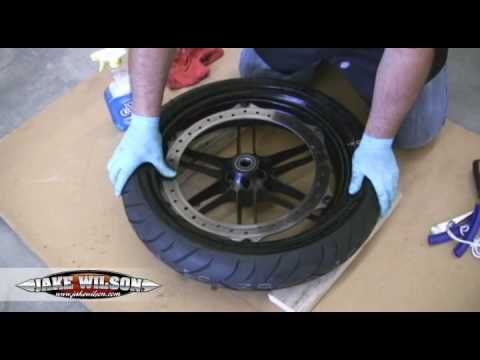
For something simple like a tire change, I usually don’t consider this expertise to be necessary, but it’s up to you.
Local boutique mechanics are a bit cheaper than authorized dealerships and what I go with for tire changes. Even though they’re a tad pricier than chains, you can build a personal relationship with a local mechanic who will learn your bike and your personal needs. You get quality service and support the local economy.
That isn’t to say you shouldn’t consider a big chain, though. For one thing, they’ll save you money.
For example, Cycle Gear charges just $25 if you buy your tires through them. Plus, finding a chain you like means you can use them all over the state or country if you go on long rides. Many even have loyalty programs and discounts.
Usually, the type of motorcycle doesn’t make much difference when it comes to the tire change price. However, some shops do charge differently based on the type of tire: off-road versus street.
Take a look at the Cycle Gear prices I mentioned above. You’ll see that off-road tires are a little bit cheaper to change at just $20 versus street tires at $25.
Many shops, especially big chains, offer extremely discounted tire changes just to get you to buy their tires.
If you noticed from the Cycle Gear prices above, $25 is the price for a tire change if you buy the tires through them, but it doubles to $50 if you buy the tires elsewhere and bring them in.
That brings me to something else important to mention…
Keep in mind. The prices I mentioned above are for the tire change only. They don’t include the cost of the tires themselves.
Motorcycle tires usually run anywhere from $50 to $200 and depend on the size of the tire and type, whether it’s street or off-road.
Another factor is whether they’re brand new or “retreaded.” Retreaded tires are used tires that have had new tread put on them.
Retreaded tires usually cost between 30% and 50% less than new tires and can save you a lot of money. The authorities have not found them to be any less safe than new tires, but some motorcyclists are still wary of riding on “used” tires.
Well, you can change tires yourself. But unless you have all the necessary tools and some mechanic training, you probably shouldn’t.
Just for reference, the tools you’d need to change your own tire are:
And it isn’t just enough to have all these tools. You need to know how to use them and perform difficult parts of motorcycle maintenance like balancing the wheels after you change the tires. Doing it incorrectly could put you in danger.
With all this in mind, it usually makes more sense to have a professional change your tires.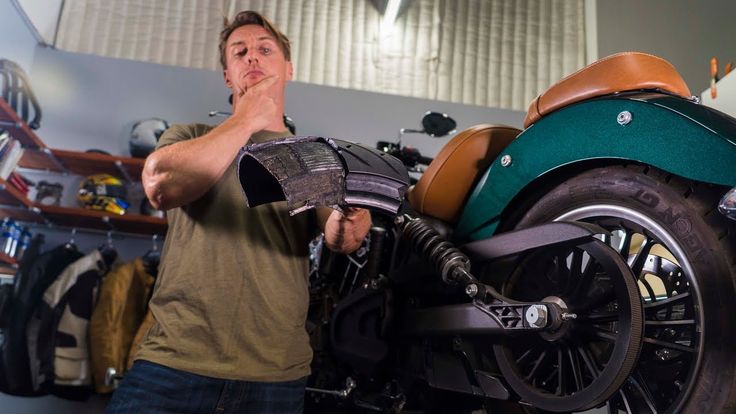
Personally, I like taking my wheels off and bringing them in to my favorite local boutique mechanic, buying the tires from the same shop if I can. This gets me good service for a reasonable price.
Well, for starters, we ignore the advertising descriptions of a wonderful “hold” on any surface (“universality” of rubber is a myth, and a highway declared as such holds much worse than a special one in difficult conditions). The principle of “taking the most expensive and popular one” is also not suitable for choosing motorcycle tires: if you choose the wrong type or profile, the same advantages can turn into a serious problem, therefore, we carefully study the characteristics. And here it is important that you know about the types, tire design, features of the choice of operation (oddly enough) and the timing of changing tires. Let's fill in the thematic gaps together.
Each class of motorcycle has its own type of “shoe”, designed for efficient transmission of torque, better grip, stability when maneuvering in the conditions in which a particular bike is most of its life. Conventionally, motorcycle tires can be divided into road, off-road and racing. Within the class, tires are divided according to tasks: road, slick, rain, cross (endur), mud, studded, and dual-use. Diameter and width - depend on the class and dimensions of the equipment. By class, we will consider it.
Conventionally, motorcycle tires can be divided into road, off-road and racing. Within the class, tires are divided according to tasks: road, slick, rain, cross (endur), mud, studded, and dual-use. Diameter and width - depend on the class and dimensions of the equipment. By class, we will consider it.
In this category, most of the products are designed for limited use and have an extremely small resource - just one race or training session. Provides the best grip on asphalt. Their profile allows you to lay the bike almost parallel to the ground in the turn, however, only after warming up.
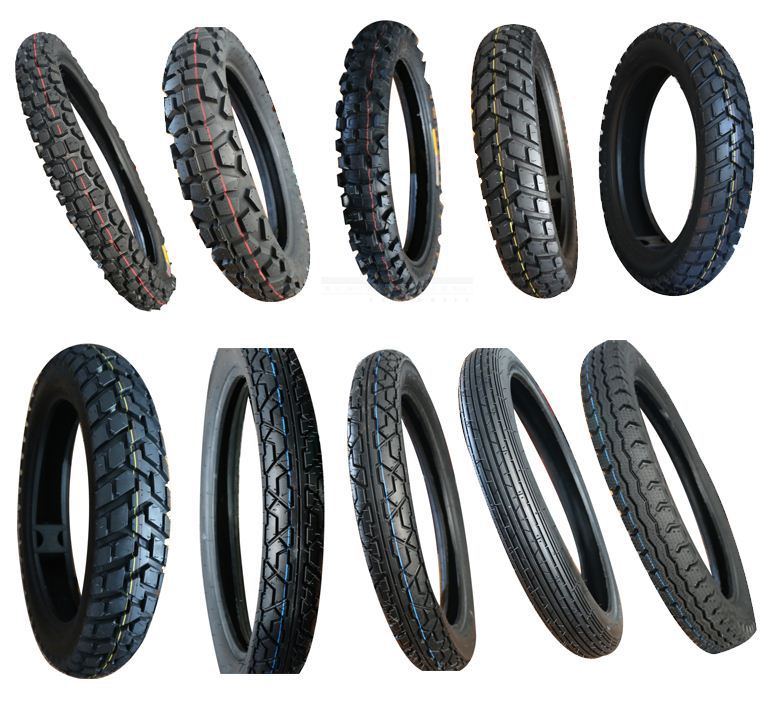 With the exception of one or two models, they are also prohibited for operation on the DOP.
With the exception of one or two models, they are also prohibited for operation on the DOP. These motorcycles mostly "live" on the track, observing the primer only from a distance, from the height of the main road, so their "shoes" are designed for asphalt: the most durable, designed for the heavy weight of the motorcycle (passenger + luggage), and "all-weather".
The range of equipment in this category is very large - from "evil" tuned fifty dollars for mini-cross to light enduro for travel, so there are a lot of models here.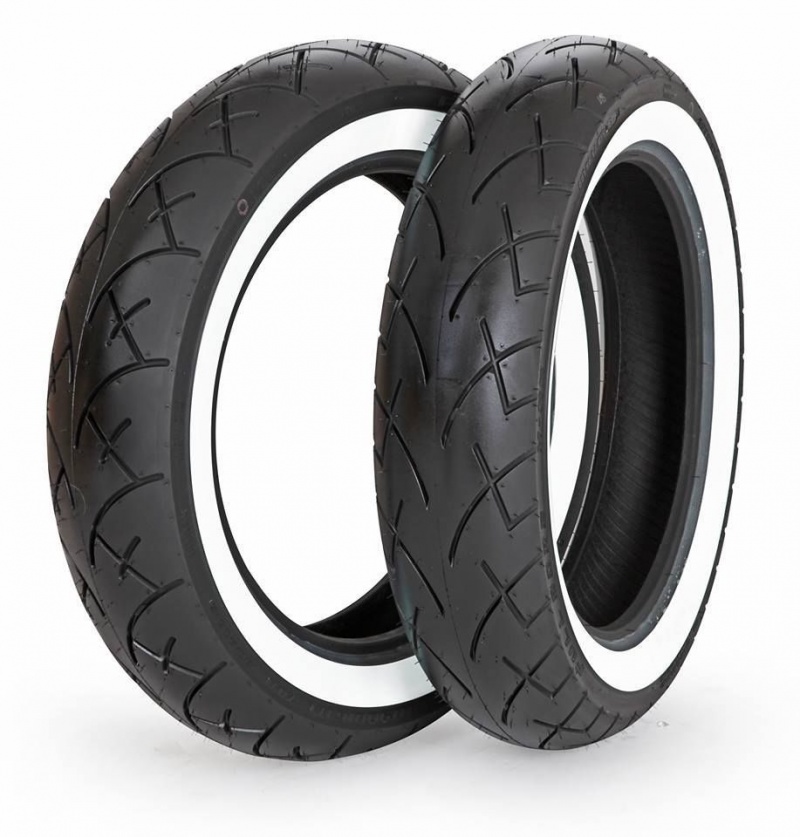 You can combine them into classes according to their purpose: purely sports, amateur and rally:
You can combine them into classes according to their purpose: purely sports, amateur and rally:
For medium-sized classics, small-capacity, retro and custom motorcycles, various road tires are produced with a low semicircular profile, moderately developed tread, revealing working properties at temperatures below 80 about C.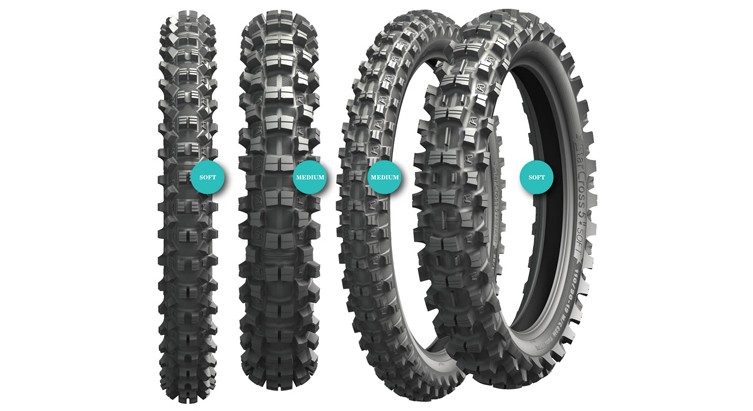 There are a lot of options, as well as specifics (all-season, rain, universal).
There are a lot of options, as well as specifics (all-season, rain, universal).
Motor tires are designed for high side loads. Its profile - even for the widest models - is more rounded than that of an automobile, consists of a working part responsible for traction, and a side part that “works” only when tilted in a turn. Parts not in contact with asphalt are also very important. It depends on them how much the tire will weigh, how much it will be washed under the weight of the bike, how long it will last.
Hidden part between the inner and outer layers of rubber, which gives rigidity and takes on the load. The structure of the cord is multi-layered. Steel wire, or threads made of polyamide, aramid fibers (Kevlar), or polyamide are arranged in dense rows either across the tire, or - intersect at an angle of 30–40 degrees in the direction of its rotation.
The edge of the tire, going inward, into the grooves of the edges of the rim, having an annular metal (internal) reinforcement.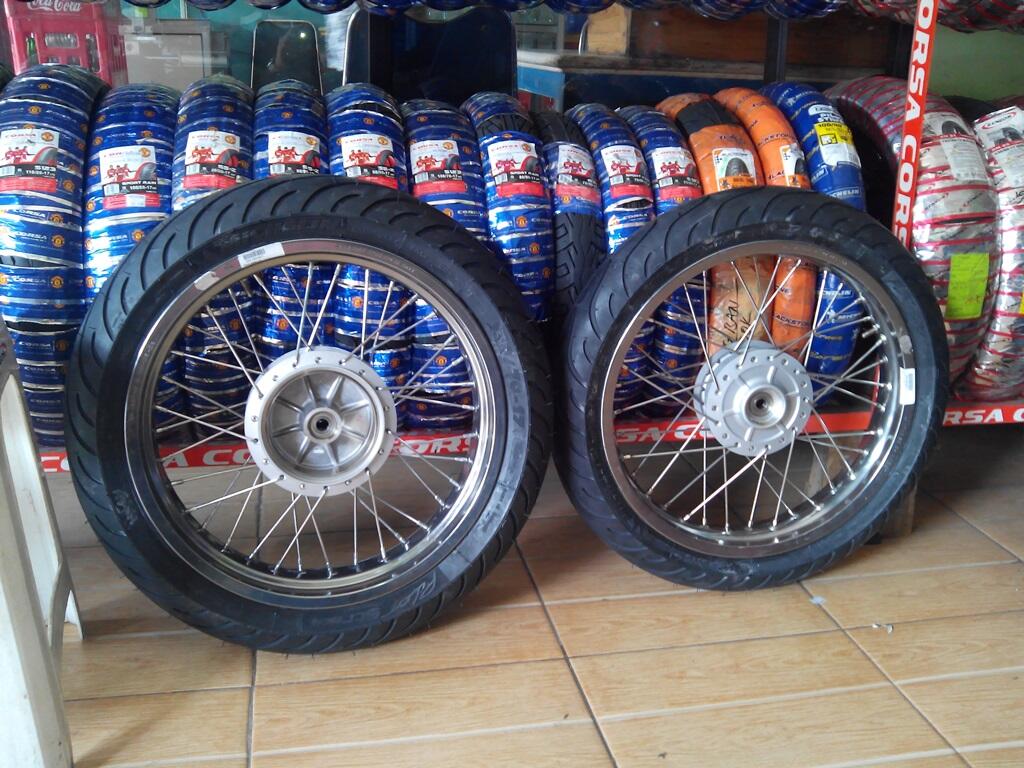 The reliability of its fixation in the rim determines the life of a motorcycle tire, and sometimes a motorcycle with a driver.
The reliability of its fixation in the rim determines the life of a motorcycle tire, and sometimes a motorcycle with a driver.
The working part, covered with an intricate pattern, the size, shape and depth of the grooves of which depend on the purpose of the product. A larger high tread is typical for off-road and cross-country motor tires, a lower, smooth one - for road and racing.
A zone connecting the tread and the bead that is not inferior to them in strength, but does not work with either the road surface or the rim. It is on it that “letters” are applied that reveal the properties and characteristics of the tire.
The three main indicators of motor rubber - width, profile (height), seat diameter (internal) - are measured in millimeters and inches. There are about a dozen markings adopted in different countries, but only four systems are widely used: Metric, Alpha, Standard (inch), Low profile (inch). For each of them, corresponding tables are available. For our market, more characteristically - Metric.
The name of the manufacturer (brand) and the name of the model are written in the largest letters on the product. The next in size is a "sausage" of numbers and Latin letters, indicating the width, height of the profile, the diameter of the rim for which the tire is intended, the weight limit per axle (rear / front), and the speed to which you can accelerate on this rubber. A little smaller - the country of origin, certificate, information about the material, design. Further, “small print” indicates no less important properties, which we will also consider separately.
I’ll immediately note the most common mistake in reading the rubber size index: the letter R is not a “radius”, as some motorcycle and car owners believe. This letter means "radial" model and indicates the radial direction of the inner carcass reinforcing layers of this tire. There are two main designs - radial - when the cord layers run across the tire, and diagonal - when they cross.
You don’t see the letter “R” in the index, but you see a gap, or “B” - it means the rubber is diagonal, and if “reinforced” or “reinf” is written nearby, it is also reinforced with an additional layer of cord.
"Sausage of letters and numbers", for example, 120/70 ZR17 (73W) TL, stands for:
The arrow with the words "wheel rotation" strictly regulates where the tire should rotate during operation. If there are letters ND (non directional) on board, it can be placed in any direction.
If the manufacturer clearly limits the installation location of the tire, he writes “Front” on it for the front or “Rear” for the rear. Without this marking, rubber can be placed on either side.
TL or tube less - as we have already deciphered earlier - tubeless. TT stands for tube type, or "suitable for camera use."
All manufacturers unanimously recommend “not wearing” rubber for more than five years, and if the equipment has been “shod” in it for ten years, even mothballed, urgently change the “bagels” without hesitation. A couple of decades ago, the resource of tires was regulated only by their external condition and the courage of the driver, but this was even before the mass “epidemic of planned obsolescence of goods”. Now, two years are taken into account in the calculation of the service life, and five years is the allowable storage period for rubber in a warehouse, as a result of which it should not be sold, but disposed of. The release date is marked with two two-digit numbers enclosed in a circle or oval. The first is the week number from the beginning of the year, the second is the year of production itself.
It is a common practice to buy lightly worn race slicks or cuts - only makes sense for training on the "ring" or karting track, but not on the DOP. In addition to poor handling, longer stopping distances on slippery surfaces, and increased risk of blown tires at high speeds, riding old tires carries legal risks. When passing a technical inspection, a cracked or worn protector (hypothetically) can cause a refusal to issue a diagnostic card. In fact, this is the same malfunction as badly worn brake pads. Also, in the event of an accident, due to the unsatisfactory condition of the rubber, the insurance company may refuse to pay you, referring to your favorite excuse - speeding (based on the increased stopping distance).
"From the factory" modern motorcycle tires are covered with a preservative silicone impregnation that prevents drying out during storage. It is slippery and penetrates deep into the pores of the rubber. Until you wipe it on the asphalt - do not count on a good "hold" and "sharp" brakes. It is not necessary to wash off the grease with gasoline or other solvent (it is useless), just ride measuredly for the first couple of hundred kilometers. By the way, after long-term storage of used road motor rubber, it is also recommended to “run in” it in order to remove a layer of coarsened material from the surface.
Even if you provide ideal storage conditions, motor rubber still ages over time, becoming covered with microcracks. If the "age" of tires has exceeded 10 years or more - do not buy them, despite their attractive appearance.
Signs of critical wear:
The principle of evaluating the residual depth of the tread grooves is now outdated - most manufacturers add an integrated tire wear indicator to the options, which is worth focusing on.
Let's start with what happens if you put a wider tire back without changing the "native" rim. This question worries many inexperienced motorcyclists who want to look more "sporty".
Firstly, you will not wait for the expected increase in traction due to the increased area of \u200b\u200b"support". Wider rubber, squeezed by the edges of the rim not in size, will tend to "up", so the calculated profile of the wheel will be violated. It will be higher, respectively, the contact patch will not increase. Secondly, the controllability in corners will worsen, the speedometer will “lie”, the weight distribution will change due to the rear of the motorcycle raised.
This is highly discouraged for most modern sportbikes that hit the track, but many classic models, nakeds and cruisers are often fitted from the factory with a combination of radial front and diagonal rear tires. Unlike the radial, the diagonal one is a little “softer”, allows for moderate overload, is sold a little cheaper, so why not?
The choice of how much to inflate the wheels to is a constant compromise between the loads on the rubber and its capabilities. On most motorcycles, the recommended pressure for each axle is indicated on a sticker (on the fork and swingarm), but this value is only relevant for the rubber model that was supplied from the factory. On a new model, look for a designation on the tire (next to the max load load) indicating the maximum allowable cold pressure. Do not take a tire if this value is lower than recommended for your motorcycle.
Let's say your bike has a sticker with the recommended 2.25 bar for the front and 2.5 bar for the rear wheel. If you ride mainly with a passenger, with luggage, making long “flights” along the track, your motorcycle weighs 200 or more kilograms, and its volume is close to a liter, keep the pressure in the rear wheel at least 2. 8–3.0 bar, and in the front 2.5 bar. If you ride around the city, alone, with almost no luggage, and are not fond of “flights”, it would be optimal to set equal pressure in both wheels at 2.2 bar.
For lightly loaded medium-sized engines, the interval varies from 2.0 to 2.3 bar, and for slender "Chinese" 2.1 bar - in the front, 1.9 bar - in the rear cylinder (especially if the tires are also Chinese). The pressure in road tires must not be lowered below 1.9 so that the motorcycle does not start to “float” in corners or on bumps - this is dangerous.
The more we inflate the closed volume of the wheel, the more “round” it becomes and the smaller the area in contact with the asphalt. A larger contact patch means greater rolling resistance and accelerated tire wear, a smaller one means worse stability, lower braking and acceleration efficiency. Up to a certain point, these nuances are compensated by the tread, so on motocross and enduro bikes, the wheels can be lowered to 1. 2 bar - front and 0.8 bar - rear. However, air is an unreliable business, therefore, in hard enduro and trials, a gel filler is now more often used, which allows maintaining a pressure of 0.4 and 0.9bar. Such a set will not live long, but this is a sport in which, as we remember, rubber consumption is not considered.
Definitely yes. The older the cylinder, the harder its surface and the lower the residual tread height, the worse the bike “holds” the road. Bald or improperly matched tires increase the braking distance, and can cause an unexpected “leaving” the track into a ditch. On an over-inflated tire, the fork or pendulum will “beat” hard, and on a flat tire, the motorcycle will become less predictable in corners and “gobble up” more gasoline than in a normal ride.
No, because their rims are not sealed and you simply cannot inflate the tire. Not all alloy wheels are suitable for tubeless, so always check what type of rubber was on the bike before. In addition, the hole in the rim designed for the camera nipple may not match the size of the new nipple.
Only if the damage to the wheel does not allow you to inflate the tire, and you still need to get to the “repair”. In all other cases, the idea is controversial. The inner surface of a tubeless rim is not designed for other rubber to constantly rub against it, creating additional heating, and the inner part of a tubeless rim may have protrusions that injure the chamber. It is possible to get a “beautiful” wheel by putting a tubeless tube on a spoked rim, but objectively, this will increase its weight (remember the unsprung masses), and reduce the life of the camera. About when it frays to break - you will know already on a flat tire. You can repair a puncture of a tubeless tire without removing the wheel, but you will have to remove and patch the tube with its disassembly.
Undesirable. Even if it does not look worn yet, its resource is already less, from frequent “heating-cooling” cycles, it becomes rougher than new, frays or cracks faster. The old tube may not fully expand and fold if the new rubber has a lower profile (and internal volume) than the previous one.
If it belongs to the Racing Street or Street Legal class, this is a completely justified choice for the owner of a sport, street, naked or classic with claims to “aggressiveness”. In other cases, it is not recommended. Firstly, the use of racing slicks or cross-country tires is not allowed on the DOP. Secondly, sports tires are designed for intensive work with a certain warm-up. At competitions, before the race, they are warmed up in special covers, and then they are “given” one warm-up lap so that from the first seconds of the test race they can provide the bike with good contact with the asphalt (sticking).
In the city, even if you ride aggressively, the slick simply does not have time to warm up to operating temperature (more than 80 about C). Or even before it does not heat up for the whole trip, given the ragged rhythm of traffic lights and possible "toffees". Accordingly, it will not give adequate grip when trying to “give a corner”, the wheels will be demolished during braking, and instead of an energetic start, the bike will “grind” on the spot.
Ideally, pre-washed, treated with a silicone spray, complete with a disk and in special cases. Naturally - in a dry, dark place with a constant temperature, away from fire, children and animals.
Change your shoes for the winter, or find and put aside good rubber in reserve - make sure that during storage it:
Few people can provide all these conditions, so remember at least the main thing: protect the motor rubber from drying out and deformation - do not hang it, but lay it horizontally, wrapped in waterproof fabric.
This is only the main part of the answers to popular questions about motorcycle tires, collected in one material. Without "deepening" in the topic - a little about everything. If any of your questions still remain unanswered - ask it in the comments, we will definitely analyze it.
Choosing tires for a motorcycle is not an easy task. Like the selection of equipment, tires should be selected based on the type of motorcycle, the nature of the ride. After determining the initial criteria, choose a rubber to find the best option available.
If you put sport tires on a sport bike, they will grip well in corners but wear out quickly. If you put ordinary touring tires in a sportbike, you can be very surprised by the handling of your motorcycle on the track. It's a good idea to use a tire with multiple compounds - then the hard center wears less on the track and the soft sides hold up better in the corners.
Tire type selection? There are no universal answers here, but there are useful tips that can help a lot.
Tires differ in structure, rubber compound, profile or tread pattern. Others differ in appearance - for example, a white rim. All these elements determine the purpose of the tires. That's where different types of motorcycle tires come from.
Sporty, racing, dynamic or classic tyres, motorcyclists enjoy driving. However, each of these categories has different characteristics, which affects the driving style and the final choice.
Each tire has a number and letter marking with information about its size and permissible speed. An approximate marking on a motorcycle tire may contain: 150 / 70-16 68 H.
Example designation 150 / 70-16 68 H defines:
Race bikes are used on the track where the best performance and therefore the result is important. This applies to grip, stability and properties that determine the speed of acceleration.
The most common racing tires are slick (bald) or racing cut. The first are completely smooth, that is, without grooves and incisions. This solution is suitable for racing on dry pavement - due to maximum surface-to-surface contact. However, this does not apply to ordinary streets. Likewise, riding in rainy weather with these tires would definitely be a bad idea.
Many models of racing tires can only be used on the track. They are marked with the NHS (Not For Highway Service) abbreviation, which means that they are not approved for driving on public roads.
Sports tires are suitable for racing and competition. The chemical composition is optimized in terms of acceleration, top speed, grip, effective and safe braking even in emergency situations. This type of motorcycle tire is not used for daily driving and on public roads.
Examples: Dunlop Sportmax GP Racer, Metzeler Racetec INT, Metzeler Racetec RR, Pirelli Diablo Supercorsa.
A separate class of racing tires are rain racing tires. Their task is to remove water from the contact patch, including when the motorcycle is tilted, and the maximum level of grip on wet asphalt. When driving on dry roads, such tires are subject to rapid wear, as they have a very soft composition.
Examples: Pirelli Diablo Rain, Metzeler Racetec Rain.
Touring motorcycles are large motorcycles designed for long journeys. They use special rubber compounds that affect grip and steering precision. It also offers treads that keep the tires reliable even in deteriorating conditions.
For this type of rubber, its resource is of particular importance, since it is precisely such rubber that is most often used by motorcycle travelers in their many thousands of runs around cities and countries. In addition to long routes with different quality of coverage, on which the tourist tire must be equally predictable and safe, long trips are usually associated with a large mass of transported belongings, without which the life of a motorcycle tourist becomes dull and bleak. And the tourist motorcycles themselves, in terms of their curb weight, are increasingly approaching diesel locomotives.
Road-tourist tires must withstand long runs, withstand high loads well. At the same time, the requirements for the quality of adhesion give way to high predictability and a "motorcycle feel" that allows even an inexperienced motorcyclist to feel and stop the development of slips and drifts at an early stage. The main task is not to pass the route at the highest speed, but to reach the final destination in the safest possible mode, while maintaining control over the motorcycle in any weather.
Accordingly, the grooves for draining water in such tires are more developed. And some models are specially optimized to maintain performance on wet roads. The resource of such tires ranges up to 20,000 km. Road touring tires are suitable for the city and travel on road and touring motorcycles. Moreover, for the latter, given their large mass, special “reinforced” versions of tires are sometimes produced.
Examples: Dunlop TT900 GT, Mitas MC50 , Metzeler Tourance Next, Metzeler Lasertec, Michelin Pilot Activ
This includes everything that has already exceeded the simple city treads, but has not grown out of the malice of the pattern to an off-road character. Dual purpose tires designed specifically for those who love hybrid driving style. They let you ride your motorcycle to work on the weekdays and hit the trails on the weekends.
For motorcyclists who prefer different riding styles, there is nothing better than the ability to conquer roads and off-road. Whether your motorcycle is a city bike or a touring bike, with dual-purpose tires, you no longer have to choose one style of riding.
Tourist and all-terrain options are distinguished by increased endurance, as they withstand the load of not only a motorcycle with a pilot, but also a bunch of accessories and things necessary for the journey. The tread changes to a clear pattern that can equally successfully help the motorcycle on simple roads and beyond.
Such rubber is most often put on enduro-touring motorcycles, scramblers and not small-capacity dual-purpose motorcycles (soft enduro for every day).
Such a tire provides a sufficient grip patch with an asphalt surface, the grooves effectively drain water, and the checker tread provides good traction outside the asphalt (on the ground, in sand, mud, gravel).
Examples: Metzeler Tourance, Mitas E-08, Mitas E-07, Metzeler Tourance.
Rubber for off-road motorsport is divided into two main types - for motocross, enduro. For each discipline, tires are produced for both professional sports and amateur use. The latter are more versatile, and very often manufacturers position outdated rubber models for “big” sports as tires for amateur driving, which remain popular among amateurs. Cross-country tires also require a tire tow bar so that during hard acceleration or braking, the tire does not rotate on the rim and the nipple (nipple) comes off. Used mainly on front and rear wheels, but more often required on the rear wheel due to the high load on the rubber.
Rubber is made not only for a specific discipline, but also for operating conditions. Many factors are taken into account - the type of soil on the track, the characteristics of weather conditions, certain goals, for example, speed and roll, or vice versa, the maximum hook.
An important difference between off-road tires and tires for other motorcycle disciplines is that such tires fall into the category of consumables, manufacturers recommend regularly updating a set of tires. Often, at the beginning of each season, athletes are forced to change tires due to rapid wear. This is due to the fact that off-road rubber has a direct sports purpose - its task is to provide reliable grip at maximum speed while passing the track, so manufacturers think about durability and long service life last.
What is a compound?
It will not be a secret for anyone that the times of synthetic, and even more so natural rubber, are long gone.
Conventional rubber has been replaced by a compound - a synthetic alloy of various monomers and polymers, which has a much higher wear resistance and, most importantly, certain properties.
Thanks to the unique properties, manufacturers have been able to produce specialized off-road tires that correspond to a certain type of soil on the track.
Cross, Motocross tires
Motocross is the most dynamic discipline of extreme motorsport. Athlete, equipment and, in particular, tires of a motorcycle are subjected to severe loads during the entire race. That is why cross-country tires must be hardy, reliable and aggressive.
These characteristics are reflected in the use of a hard cord (steel base) for maximum durability, an aggressive tread pattern with pronounced elements for better traction, and a special compound that is selected depending on the type of surface of a particular route.
For hard, dry ground, use tires with wide lugs (to increase bike control) and a flexible compound that enhances grip on the track. For soft, loose ground, tires with a harder compound are used. A similar type of rubber is used in freestyle motocross in order to extend the life of tires, because. rubber is strongly erased on the hard canvas of iron eps and is selected depending on the type of soil on a particular track.
The rule generally applies: the softer the jumps.
The pressure ranges from 1.5 to 3 atmospheres covering the track - the higher the pressure. But it also happens the other way around - for example, in motofreestyle, riders prefer to inflate tires to a “stone” state for maximum roll and reduce the risk of chamber breakdown in the event of a hard landing.
Examples: Mitas C-19, Mitas C-21, Mitas C-10 Country Cross, Dunlop Geomax MX12 Sand, Metzeler MC360, Pirelli Scorpion MX Extra X - enduro
Unlike motocross, enduro and hard enduro courses are littered with various obstacles such as logs, roots, loose pebbles, truck tires, river fords, and even whole rocks. To overcome such a “tin”, special tires are used that combine the advantages of cross-country rubber and trial tires.
Enduro tires use a softer, extra wide cord and a sticky, highly elastic compound that provides maximum grip on any surface. According to the regulations of international competitions FIM, the tread pattern of enduro tires has a height limit, so enduro rubber has a less aggressive tread than cross-country tires.
In the enduro discipline, tubeless tires are more often used, filled with a special mousse or tubes system instead of air in the chambers, as is the case with motocross rubber. This solution allows you to use the minimum pressure in the tires without the risk of getting a breakdown or slipping of the tire on the rims during the race.
Examples: Mitas E-09, Mitas EF-07, Mitas XT-754
In classic motorcycles, the main goal is to get quality grip. Classic motorcycles have weaker engines and slower speeds and do not require special radial designs for high performance. These are safe tires with a simple design.
Diagonal tires are suitable for cruiser class motorcycles. Their sidewalls resist loads and impacts better, a heavily loaded motorcycle with a passenger on board is not a problem for such tires. For powerful and fast power cruisers such as the Yamaha V-MAX II and Harley Davidson V-Rod, radial tires are more suitable. Their sidewalls are not as strong, so the height of such tires, as a rule, is much less. They are less subject to internal heating and wear during movement, especially at high speeds.
Examples: Metzeler ME888 Marathon, Michelin Commander III Cruiser.
Tires are made from synthetic rubber (a mixture of petroleum as well as chemicals such as sulfur, carbon black and silicone). They are assembled in stages, starting with the assembly of the cord and belt construction, after which the rubber is applied and molded.
In order for the trip to be as safe as possible, and the choice of tires for a motorcycle to be accurate, it is worth knowing what is hidden inside motorcycle tires.
The most important in motorcycle tire construction are:
1. Cord.
2. Board.
3. Protector.
4. Side walls.
The cord, called the carcass, is made of a very strong material whose task is to give the tire the correct shape and remove bumps or stress. The carcass of the tire consists of two or more layers of textile cord (viscose, nylon, polyester) that intersect at certain angles.
The side walls, which are the thinnest element, are very resistant to deformation.
The bead is the part of the tire that connects to the wheel. It is usually steel wire heavily coated with rubber. The bead fits snugly against the wheel to prevent rotational sliding of the wheel in the tire.
The tread is the part you see when you choose your tire. For the most part, slicker tires perform better on smooth, dry surfaces, while fatter tires perform better off-road.
The protector is responsible for the traction properties of the motorcycle and the removal of water, sand and other contaminants.
Sidewall - The area of a tire that connects the tread and bead. This is the part of the tire we talk about when we talk about height, profile or aspect ratio. Generally, a shorter sidewall has stiffer sidewalls that tend to flex less. For the rider, this means better handling and cornering, worse shock absorption, and a more difficult setup.
mean? The markings can tell a lot of information, such as what maximum speed the tire should run, how much weight it can carry, direction of rotation (which is indicated by most tires), when the tire was made, tire size.
Metric tire size example: 180/70R-16.
This is the alphanumeric sequence you see. Example: MU85B16.
Tires tend to wear unevenly over the entire area most of the time. This is due to insufficient air pressure, suspension settings and tire stress. There are many things you can do to take care of your tires, but the most important thing is spinning them.
Some tires have a specific direction of rotation to improve wet grip and optimize noise emissions. For tires with a directional tread pattern, the direction of rotation is indicated by an arrow on the side of the tire.
To optimize tire performance, follow manufacturer's recommendations for changing front and rear tires, always turning tires in the direction indicated on the tire surface. Do not interchange front and rear tires without observing the markings as this may result in poor tire performance and loss of traction.
The front wheel on a motorcycle is usually narrower and has a less aggressive tread pattern. The front rim handles most of the bike's braking and is designed to optimize steering.
The rear tire carries most of the motorcycle's weight, as well as rider and passenger weight. The rear tire is designed to carry heavy loads and also withstand the force exerted during acceleration. They have a stronger construction than the front tires and have more aggressive tread to optimize traction.
These tires have a special marking that indicates the ideal direction of rotation. If the motorcycle tire is mounted against the direction of rotation, it can seriously affect the handling characteristics as well as the ability to grip the road surface. Moreover, improper installation may cause an accident.
TL is a tubeless tyre. TT stands for tube type, intended for camera use.
Most motorcycles are now equipped with tubeless tires. Tube tires are used in the simplest and cheapest motorcycles, and those designed for long trips. The advantage of tube tires is the ability to continue driving even with a small breakdown and, possibly, replace a damaged tube yourself.
However, as a rule, tubular wheels are more problematic and less safe to use, because even the smallest puncture of the inner tube results in an almost instantaneous loss of pressure in the wheel. Tubeless tyres, more expensive to manufacture and require more precision in assembly, but safer - whatever gets hit usually stays in them and pressure loss is much slower.
Buying new motorcycle tires is a real challenge, especially when it comes to choosing the best option. Rubber should be chosen as scrupulously as spare parts for your steel horse. Like many other motorcycle components, tires have their own markings and codes, and so do tires. It is worth knowing the symbols that are on motorcycle tires.
An important symbol by which you can read important information for the user is a dash. A dash ("-") in the index of a motorcycle tire indicates that it is a diagonal tire. If there was a "B" in its place, then it would be a diagonal tire with a belt, and when the "R" is a radial tire. Additional markings that can be found on motorcycle tires are the letters "TT", which says that we are dealing with tires that require a tube, while "TL" (TubeLess) is a tubeless tire.
You can often find additional markings:
Rigidity designation on motorcycle tires:
Green is soft. Tires for driving on soft ground.
Yellow is medium.
Red is tough. For hard ground.
Thanks to the “DOT” marking, we can see the date of manufacture of tires, the manufacturer and the plant where they were made. At the end of each such description there are four numbers, for example 1819. This means that the tires were produced in the 18th week of 2019of the year. Three digits means that the tire was produced before 2000. In this case, the first two digits indicate the week, and the last digit indicates the year. The presence of the DOT marking on tires informs that this set of tires meets the standards.
Depending on the intensity of motorcycle riding, tires should be changed every two to three seasons. Want to save money on tires? There is an option to buy used tires. But how good is this, a safe idea?
Don't invest in motorcycle tires. Each driver has a different driving style and different dynamics, which means that the tires are subjected to different stresses. This affects not only the condition of the tread, but also the general condition of the rubber, which is not visible at first glance. In addition, such a kit will have to be changed faster, and instead of investments, we have a new expense.
Worn motorcycle tires often go through most of their life cycle. If a set of new tires is enough for two, three or even four seasons, then in the case of old tires, further operation due to aging processes often becomes impossible after a year.
Used motorcycle tires are dangerous! The motorcyclist risks driving safety. After all, he does not know the technical condition of the tire and cannot accurately determine whether it was seriously damaged. Every owner of two-wheeled transport should keep this in mind every time he buys tires for a motorcycle.
It is recommended that you regularly check your motorcycle tire pressure with a pressure gauge before you ride. If the motorcycle is running, wait about 3 hours after turning off the engine. This is important because as the temperature rises, the pressure in the motorcycle tires increases, and the factory values are indicated for cold wheels.
The optimal level of fuel combustion is achieved at the values recommended by the manufacturer. Low pressure in motorcycle tires leads to intensive wear of the tread. It is difficult to say unequivocally how many atmospheres should be in motorcycle tires. This information is in the vehicle owner's manual. This figure is different for each motorcycle. By the way, it is very convenient to use a compressor instead of a pump.
Consequences of too high pressure
Excessive tire pressure on a motorcycle reduces the contact area of the tire with the road and thus the grip on the ground. This has a significant impact on security. When there is too much air in the tires, driving comfort is reduced.
Consequences of too low pressure
Too low air level causes excessive heating of the rubber. Then it becomes less resistant to damage, its structure may be deformed due to the direct impact of a large weight. This also affects the stability of the motorcycle, driving accuracy.
Low pressure tires are used on sports tracks. Warming up the tire is recommended here, as this provides better grip on the ground.
Recommended pressure:
Motorcyclists should pay special attention to new tires for their cars. They usually have much higher requirements for traction than car drivers. The most experienced pilots know that running in new tires is necessary and affects traction during the first few hundred kilometers.
Tire manufacturers advise motorcyclists to ride carefully for at least the first 150-200 km on new tires. Motorcyclists should not brake hard, accelerate hard, or turn sharply.
A smooth ride for the first 200km allows the rider to get used to the tires and their feel, as well as getting rid of the chemicals on the rubber surface. After running in, check the tires for uneven wear.
Tires wear out over time and need to be replaced. Based on their personal riding style preferences, motorcycle tire wear will vary from rider to rider. Typically rear tires begin to flex, losing their rounded profile as the center of the tread wears faster than the sidewall. Front tires usually wear more evenly across the tread, but jagged wear, known as bowl wear, may begin to show.
Check your tires for adequate tread depth. When a tire is worn on the built-in indicators with a tread groove depth of 1/32 inch (0. 8 mm) or less, or the tire cord or carcass is exposed.
Also inspect the tires for uneven wear. Wear on one side of the tread or flat spots on the tread may indicate a problem with the machine or motorcycle.
Each tire manufacturer recommends different mileage for tire replacement. On a motorcycle that mostly rides on pavement and good quality roads, you can change tires every 10,000 kilometers. A motorcycle that constantly rides off-road and is constantly exposed to severe damage, tires are changed every 4000 kilometers.
It is recommended to rotate the tires as soon as you notice a difference in wear between the front and rear wheels. But before rotating, make sure that this wear is not caused by negligence or mechanical part.
Tires in poor condition can ruin the performance of your motorcycle and even endanger your or your passenger's safety. It is recommended to check weekly:
When your tires are worn out and become dangerous, you will feel the warning signs while riding a motorcycle. If your motorcycle starts to wobble. If your motorcycle starts to vibrate, makes a strange sound or becomes unstable, this is an indication that the sidewall of your tires is too worn or delaminate.
It is possible, but there is no guarantee that the rubber will work properly. Such activities require skilled workers to produce a tubeless rim from a spoked wheel. It's better to switch to tubeless alloys, depending on your requirements and the bike.
Tubes are not installed in tubeless tires. The disc of a tubeless wheel is not designed for the installation of cameras. The so-called “nipple” of the camera will hang out at the point where the tubeless disc is attached, and in the end it will simply come off. A tubeless tire has less space and the installed tube will not be able to straighten out, air bubbles will appear, which will affect the balance and handling.
You can fit an old inner tube into a new tire and save money. However, for safety reasons, it is extremely important to have a suitable tube under the tire. Tubes and tires are clearly labeled for size, and the tube must be the same size as the tire, such as a 14" tube on a 14" tire.
Racing tires have a smooth tread pattern that is very efficient in motorsports. The smooth tread provides the maximum contact area with the asphalt, resulting in better traction, better braking and acceleration.
Rubber for the city must have a tread of at least 16 mm. Racing is not allowed for city driving.
Motorcycle tire manufacturers say you can't mix tires from different brands. This is not a sales tactic, tires are developed in pairs, traction and handling are determined by testing both at the same time.
Modern motorcycle tires are durable and efficient to work in all conditions. However, like any mechanical part of a motorcycle, tire life depends on external factors.
To ensure that the tire does not lose its qualities ahead of time, some steps must be taken:
Optimum air pressure maintenance:
Tire pressure control is essential to maintain tire performance and to maintain motorcycle fuel economy.
For optimum pressure follow these steps:
1. Maintain air pressure at the level recommended by the motorcycle manufacturer.
2. Check your motorcycle tire pressure at least once a week.
3. Inflate your tires in the morning as the air is cold and will expand even better.
Check tire tread regularly
Checking the tread is a common way to determine the condition of a motorcycle tire. If the wear is above the recommended level, they must be replaced.
Avoid sudden driving maneuvers
While driving, avoid sudden braking and rapid acceleration. It damages the engine, clutch, brakes, and tires. When braking hard, the tires slide, which burns the rubber and damages the tread. This places additional and excessive stress on motorcycle tires.
Park the motorcycle in the shade
Parking your motorcycle in direct sunlight is not recommended as hot and harmful sunlight can damage tires. The consequence of this is the formation of cracks on the sidewalls of the tires.
Clean tires with mild soap and water
When washing your motorcycle, clean motorcycle tires with mild soap and water.